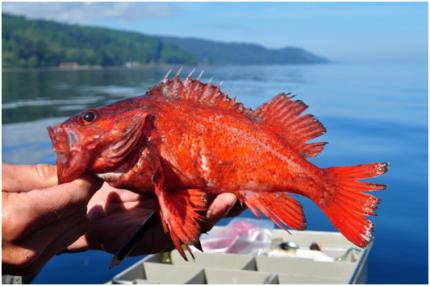
This identification guide is intended to provide information and key characteristics for common rockfish species in Washington’s marine waters. To access species information, click on a species name below. For each species, information is available on expected sizes, typical distribution, and published ages.
View and download a printable rockfish identification guide.
More information on rockfish is also available in this April 2024 WDFW blog post.
Below are the definitions of characteristics helpful in identifying rockfish:
- Caudal fin: the tail fin.
- Dorsal: on the top side of the fish, or body element.
- Gill rakers: bony, toothlike projections from the front edge of the gill arch, opposite the gill filaments; often used as water filters to trap food items between the gill arches.
- Interorbital: between the eyes.
- Lateral line: a row of porelike openings on head and body; usually applied to the series of pores or pored scales along the side of the fish’s body.
- Pectoral fin: one of a pair of fins on each side of a fish that is attached to the shoulder girdle, behind the head.
- Ray: supporting bony elements of the fins.
- Spine: a bony projection, usually on the head. Also a single, hard, unbranched ray in a fin, i.e., a spinous ray.
- Suborbital: below the eyes.
- Symphyseal knob: a fleshy protuberance at the convergence of the bony elements of the lower jaw.
- Ventral: on the lower surface of the fish; on the belly.
For additional identification assistance, a dichotomous key for rockfish is available on the Oregon Department of Fish and Wildlife's Website.
The NOAA-Alaska Fisheries Science Center also provides identification information about rockfish common off the Alaskan Coast.